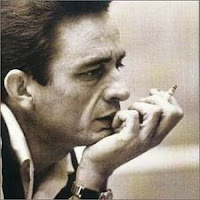This emotive opening is emulated throughout the production. The band members stand in a derelict household; no panes of glass in the windows remain, wooden joists and structural beams are exposed, the paint flaked and decayed - the house nothing but the withered skeleton of its former self. Connotations are inevitably drawn - the derelict building represents the lit
 eral epitome of the phrase "broken home." The camera cuts between extreme close ups of the graffiti, and the wrecking ball swaying not ten feet from what remains of the walls. The presence and portrayal of the graffiti might well be a suggestive of youth, plausibly angered youth, a connotation reflected in the song title. We witness close ups of discarded, flat tin cans, the camera pivoting across the rib-like roof beams, rays of light illuminating the smog of dust and scattered debris. The miasma might well represent a confusion or lack of direction, while it's lingering existence, and that of the litter, denote neglect.
eral epitome of the phrase "broken home." The camera cuts between extreme close ups of the graffiti, and the wrecking ball swaying not ten feet from what remains of the walls. The presence and portrayal of the graffiti might well be a suggestive of youth, plausibly angered youth, a connotation reflected in the song title. We witness close ups of discarded, flat tin cans, the camera pivoting across the rib-like roof beams, rays of light illuminating the smog of dust and scattered debris. The miasma might well represent a confusion or lack of direction, while it's lingering existence, and that of the litter, denote neglect.The camera proceeds to pan along a collection of adolescents, idle and each with a look of total indifference. We cut to a close up of a particular individual, enforcing the visage of an exhausted sort of sadness.
As the video progresses, a rhythm is established - each chorus, the aforementioned wrecking ball crashes against the adolescent's haunt as the camera begins to shake as we witness footage of the band performing and the teenager's ensuing mosh; effectively allowing the audience a glimpse of actually being present at the demolition.

The established formula of slow, bleak, details of the house itself, and the pandemonious chorus footage of the wrecking ball's effects and the resident's reactions continues throughout, the already crippled dwelling spiralling further towards nothing but rubble as the song continues. Eventually, the inhabitants themselves begin to tear down beams, strip plaster, hurl aimless trashed matter, to the degree of the band's eventual departure, at which point the vandals turn upon the instruments. This final act of desctruction might well be construed as highly telling - that a cycle has become established in the lives of the teenagers present; those whose parents seperate are likely to struggle to sustain healthy marriages in the future, suggested specifically by the teenagers, whose household was broken by a third party, then destroying the functional instruments of others - thus acting as the destructive third party themselves.
 st.
st. 










